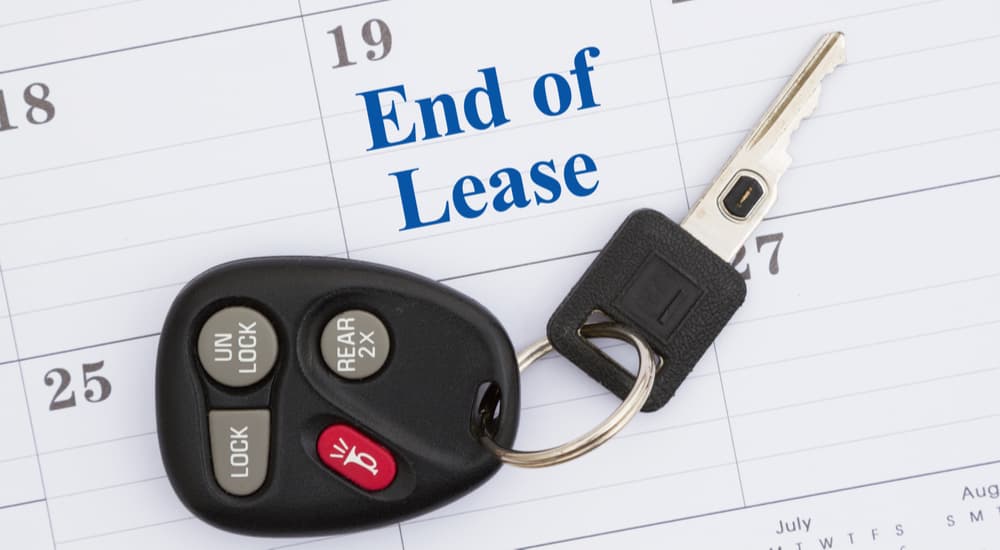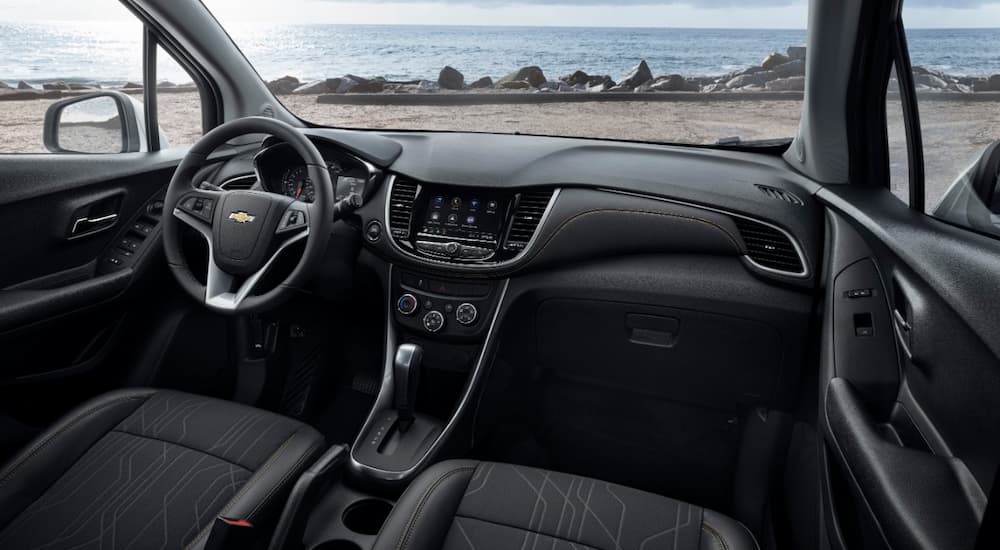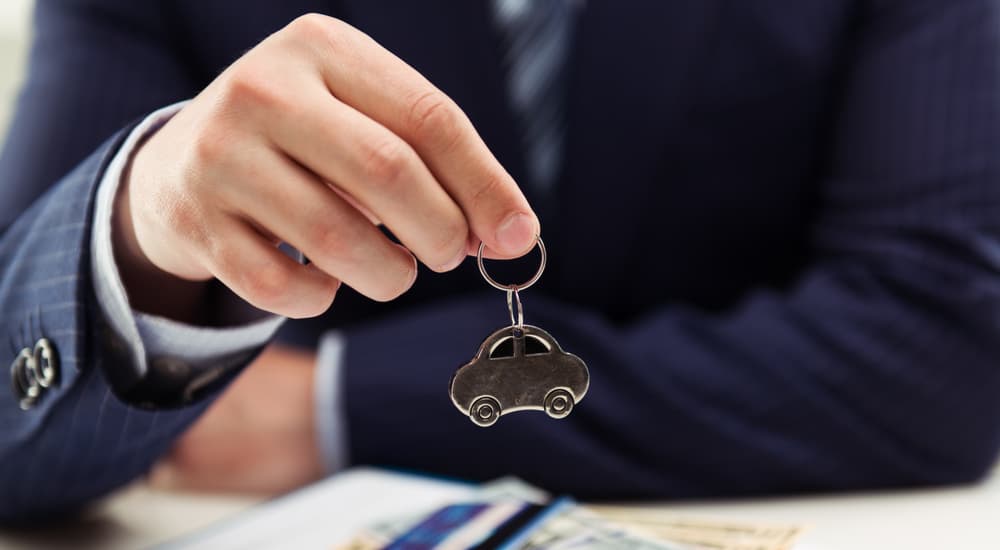It’s Chevy end of lease time, and your options are unclear. Should you buy your leased vehicle outright or drop it off at the dealer and walk away? For so many lessors, the idea of leasing is desirable until the end of their lease term approaches. What started off as such an easy process is now anything but: the manufacturer is sending letters, the dealer is calling, and the clock is ticking.
Figuring out your next steps as your lease termination approaches is actually fairly easy once you know your options. In fact, most manufacturers publish an end-of-lease guide on their website to help make the transition easy and smooth. Consider GM Financial, the financing arm of global automaker General Motors. The company’s clear and concise guide explains the return process, as well as three main options, which are common among most leasing companies.
The first option is to purchase or lease a new vehicle; the second, to purchase your current vehicle, and the third is to simply turn in your vehicle and walk away. The guide goes on to describe in detail how to proceed with any of the three options, as well as the process for properly turning in your existing leased vehicle (regardless of the next step you choose). What can you expect as your lease term ends? Here’s our handy guide.
Pre-Return Inspection
First on the list of things to do as your lease ends is schedule a vehicle inspection. If you’re behind the wheel of a GM vehicle (e.g., Chevy, GMC, Buick, or Cadillac), you can have your vehicle inspected by your dealer or any certified dealer that carries the nameplate. GM also partners with a third-party organization that can provide an inspection at your home or office if visiting a dealer is inconvenient.
Before choosing the more convenient option, consider the benefits of bringing your car to an authorized dealer. First, the dealer can point out excess wear items that might trigger a surcharge and suggest pre-return repairs to save you money. As a certified dealer, they can perform the repairs on-site, sometimes while you wait. Simply mail copies of the repair receipts to GM Financial, and any charges will be reversed.
The other advantage of having your car inspected at the dealer is you’ll have a chance to establish a rapport with a sales consultant. They’ll have inside information on current lease deals and can steer you toward a replacement vehicle that works for your budget and lifestyle. Dealers are in a unique position to understand the entire lease cycle, so they know what you’re going through and how to make the process less stressful.
Remember to gather your vehicle’s keys and fobs, along with any accessories you may have removed, such as cargo covers and floor mats, and bring them to the inspection. If you’re driving an EV or a Plug-In Hybrid, don’t forget the charging cable. You’ll also want to check the glove box to ensure the owner’s manual is there.
Returning Your Leased Vehicle
It may seem simple – drive to a dealer, hand them the keys, sign a form, and leave – but actually, returning your lease requires just a little bit more preparation. First, remove all of your personal belongings, including sunglasses, toll transponders, and garage door openers. The most common item left behind by lessors is device chargers, so check the entire vehicle to make sure you’ve collected them.
Also, common courtesy dictates that you should return the vehicle clean and vacuumed. In fact, the car should be clean at the time of inspection to ensure excess dirt isn’t mistaken for wear and tear. Before you worry too much about a few dings here or a scratch there, rest assured that your lease allows for normal wear-and-tear, like small chips in the windshield. Most guides clearly display examples of normal wear and excess wear, so you should be comfortable distinguishing between the two.
Don’t be surprised if you end up responsible for a set of new tires: tires are considered part of the vehicle, which means you can’t return your leased car with worn-down tires. Aside from that, any necessary repairs should be taken care of prior to returning your car; otherwise, you’ll be financially responsible upfront for the repair costs.
What Happens After the Return
You’ve likely returned your vehicle to the dealer from which you originated your lease. If not, you’ve returned it to a different dealer that carries the same brand. By now, three years later, you may have forgotten that your lease contract included a security deposit. It’s not the dealer’s responsibility to return the security deposit to you, so you’ll have to wait up to 60 days to receive a refund from the leasing company.
What you can expect from the dealer is a final invoice that details any excess wear-and-tear charges, as well as any outstanding payments and fees for going over the agreed-upon mileage. Other potential expenses included associated taxes or return fees and outstanding parking tickets or toll violations. It’s easier for all parties if you can settle any outstanding charges at the time you return your vehicle.
It’s possible to know ahead of time how much you owe at the time of return. Simply contact the leasing company, and they’ll update you on the current outstanding charges. Also, the lease company can tell you the payoff amount or the cost of the vehicle if you decide to buy it. This is a fixed amount that’s based on the residual value calculated at the time you leased your vehicle, so don’t expect any wiggle room on the price.
What Do Most Lessors Decide?
By a large margin, most lessors end up moving to a new vehicle lease. The reason for this is simple: by the time you’ve satisfied the term of the lease by making every payment, you’ve paid for a substantial percentage of your leased vehicle’s value. The residual value represents the unpaid value, and because it’s predetermined, you can’t negotiate the price down. For some buyers, it’s akin to purchasing a used car, and interest rates on used cars aren’t always the most advantageous.
Also, the allure of leasing is that you get to drive a brand new vehicle. After three years behind the wheel of your current car, it’s possible that newer models offer better, more advanced safety and infotainment technology. It could be that a vehicle you’ve had your eye on received a redesign, or the manufacturer released a completely new model. The point is, you get to pick from a huge pool of newer options.
Because lease payments are generally lower than traditional loan payments, you’ll probably have a lower monthly outlay even though the vehicle is newer. Most manufacturers offer special seasonal lease deals and rebates, including loyalty discounts, to repeat lessors. They want to reward your loyalty and keep you in the family, so be sure to ask your dealer if a rebate is available.
Turning in your leased vehicle doesn’t have to be a stressful experience. With a little preplanning and some intel on what your outstanding costs add up to, you can handle the inspection, return, and new lease all in one visit. After all, the goal for all parties involved is to make the process pleasant and hassle-free. As leasing continues to explode in popularity, the lease return process is a familiar one to most dealers, which means they’ll support you every step of the way.






